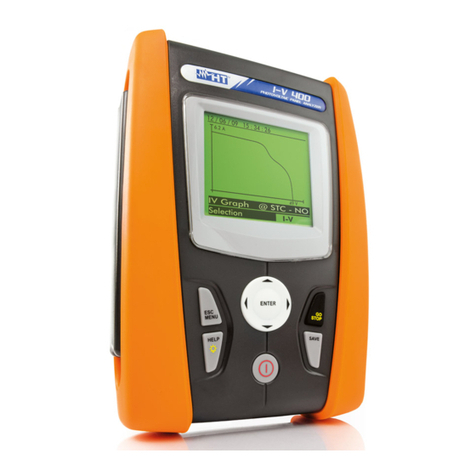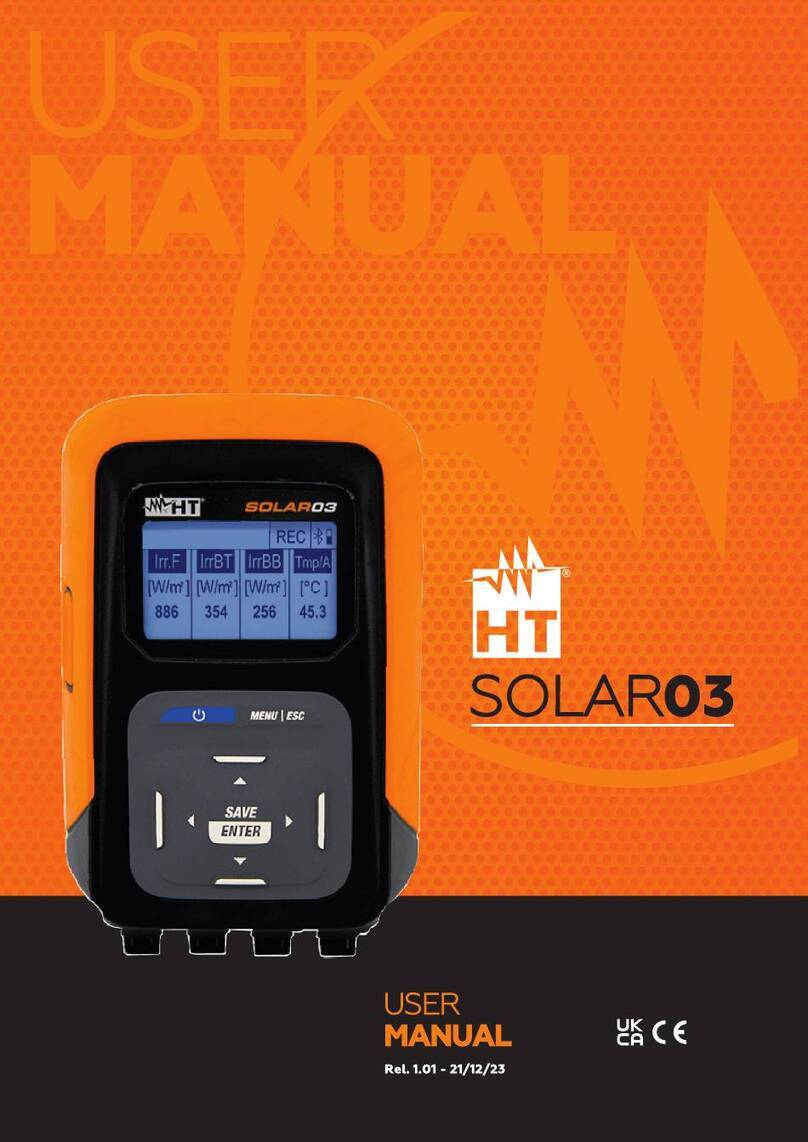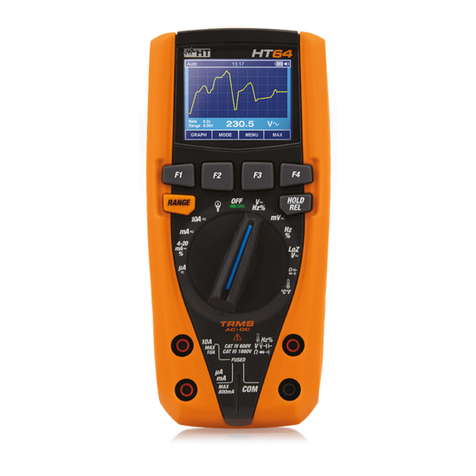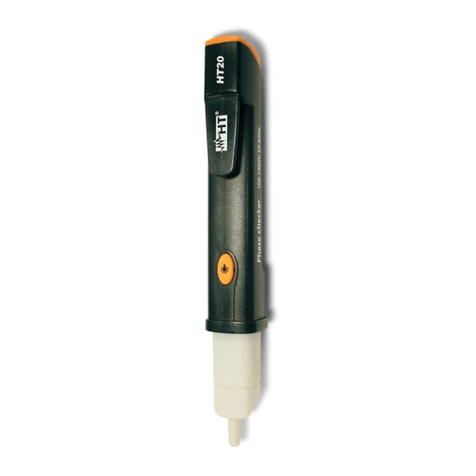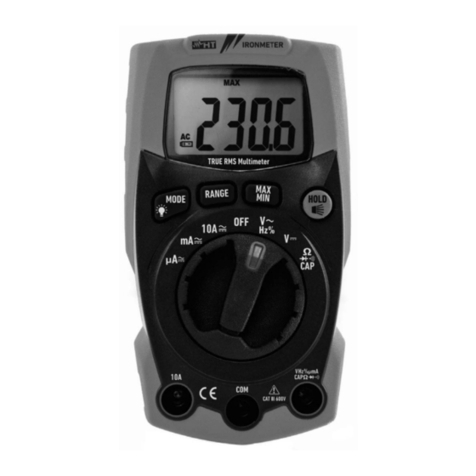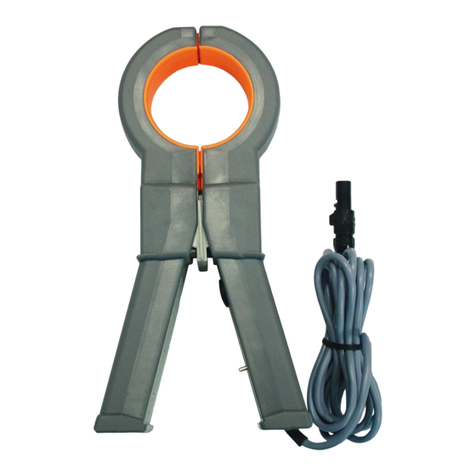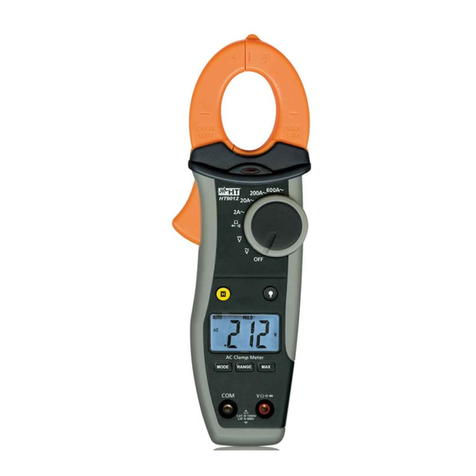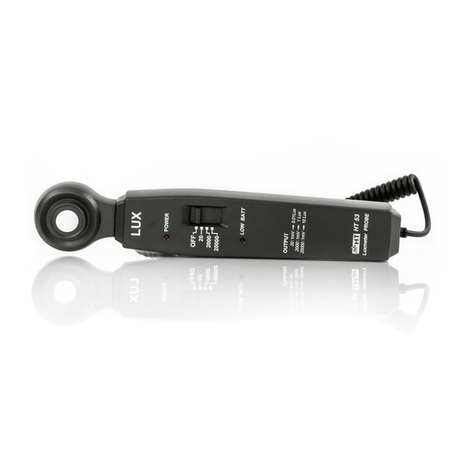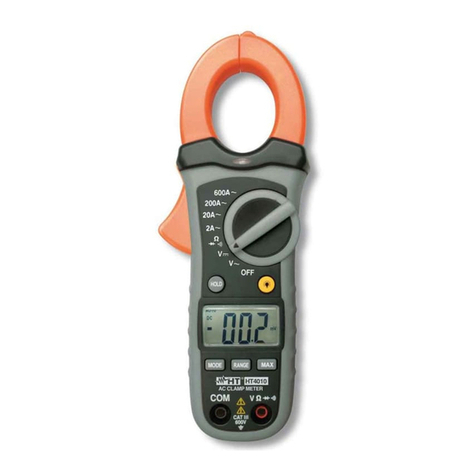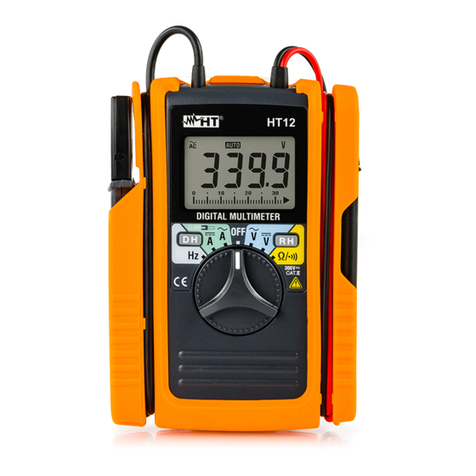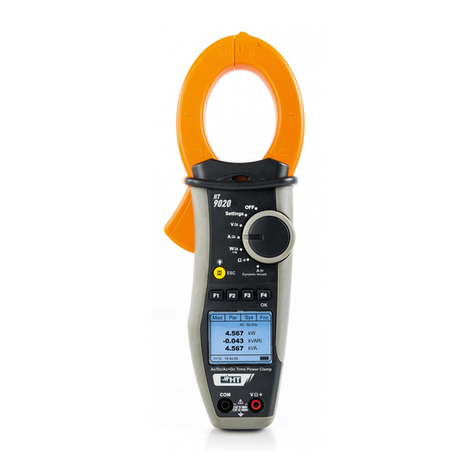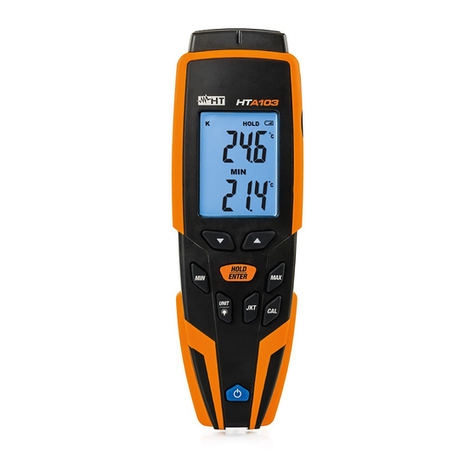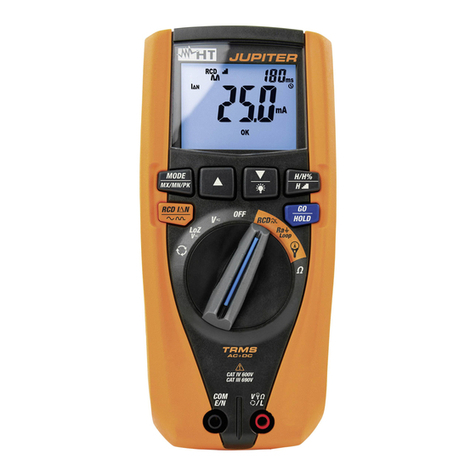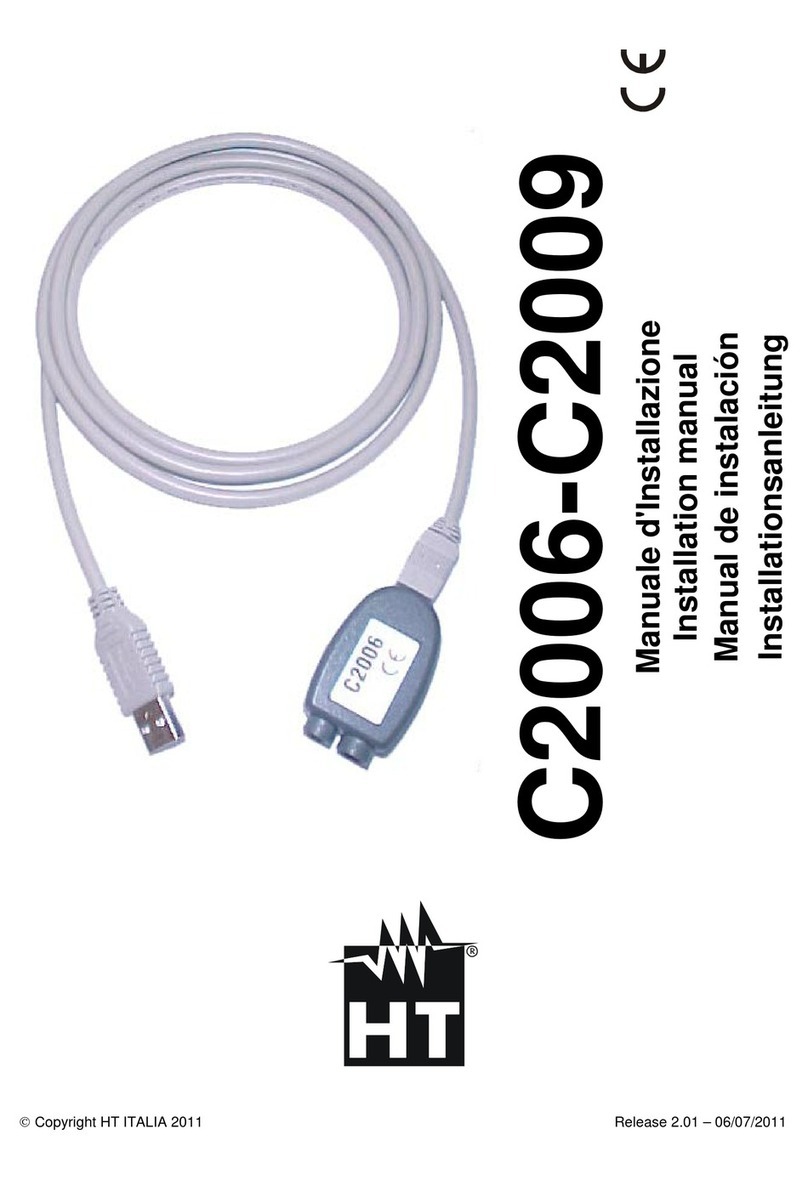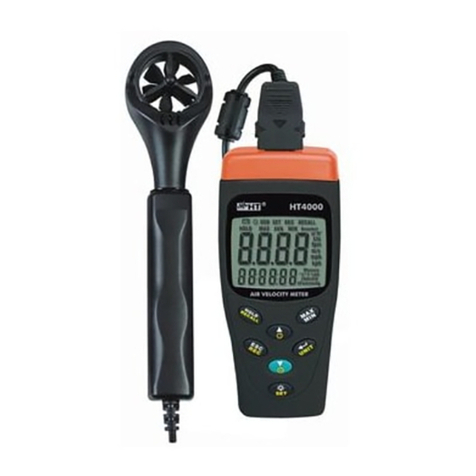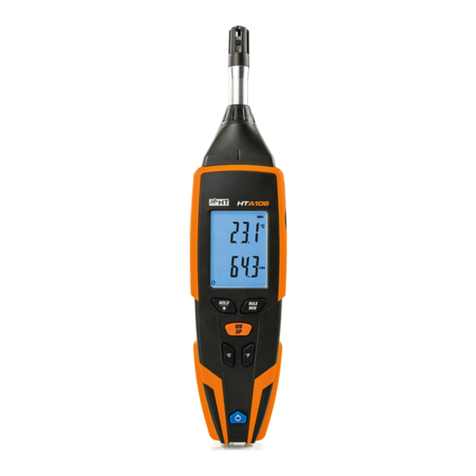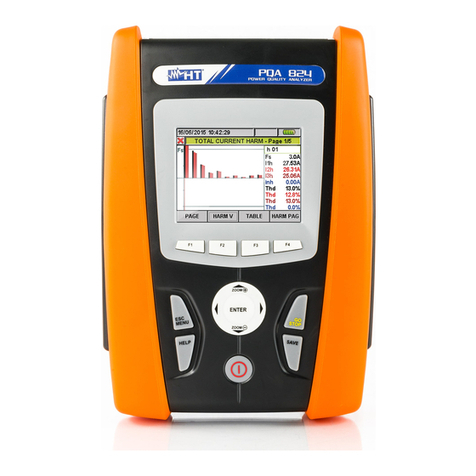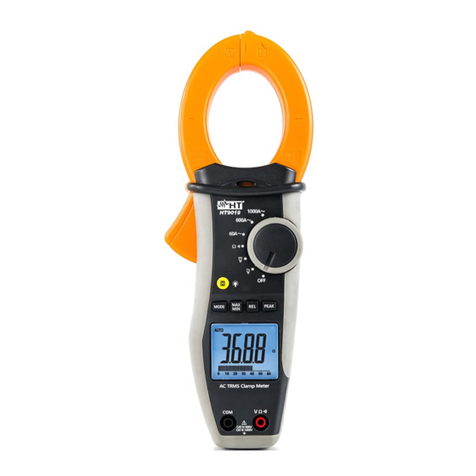
HTFLEX33D
EN – 5
3. INSTALLATION
The current probe was designed to allow the operator to connect this measurement
device around a conductors without disconnecting it as many CTs presently require.
Even though the current probes output is AC, there are instances where the user will
want to orient the transducer so that proper polarity will exist at the output terminals.
This is done by installing the transducers around the conductors with the molded-in
arrow on the latch (see Fig. 2) pointing in the direction of conventional current flow.
Conventional current flow is defined as current flowing from the positive to the negative
potential
When a three phase plant is under test, the correspondence between volt probe of
measuring instrument connected and clamp measuring the same phase must be
respected. Please refer to phase labels (I1, I2, I3) present on flexible clamps and
interconnection cables
The current probes must be installed with the interconnection cable on the outside of
the loop when the latch is engaged. The polarity arrow, the double insulation, and the
CAUTION symbols will all be on the outside of the loop. It should also be noted that the
current probes would produce twice the output voltage if you wrap the transducers
around the conductors twice
There is minimal shock hazard using a HTFLEX33D current probes. Each transducer
has been Hi-Pot tested to several thousand volts with no voltage breakdown. This
particular characteristic allows high-current measurement (with a wide frequency
bandwidth) of conductors at less than 1000VAC potential to earth.
CAUTION
Hazardous potentials may exist in the vicinity of the desired current
measurements. Use locally approved safety procedures when working near
hazardous potentials
It is recommended not to install the clamp around a live bus that is at a
hazardous potential. If installation is not possible when the bus is inactive or
power is turned off, always use appropriate gloves and/or equipment approved
for working around hazardous potentials when installing the HTFLEX33D in the
vicinity of these potentials.
4. MAINTENANCE
CAUTION
Remove the detergent with clean water, then wipe dry with a clean cloth. The
use of solvents as cleaners are not recommended unless thoroughly tested
and found harmless to all surface and parts. Do not submerge the
HTFLEX33D transducers or the electronics package into water or other fluids
Preventive maintenance primarily consists of cleaning the transducers and
cable to prevent surface contamination. Use a mild detergent and water to
clean the transducers and cables. Remove the detergent with clean water,
then wipe dry with a clean cloth
5. END OF LIFE
CAUTION: the symbol on the instrument indicates that the appliance and its
accessories must be collected separately and correctly disposed of












